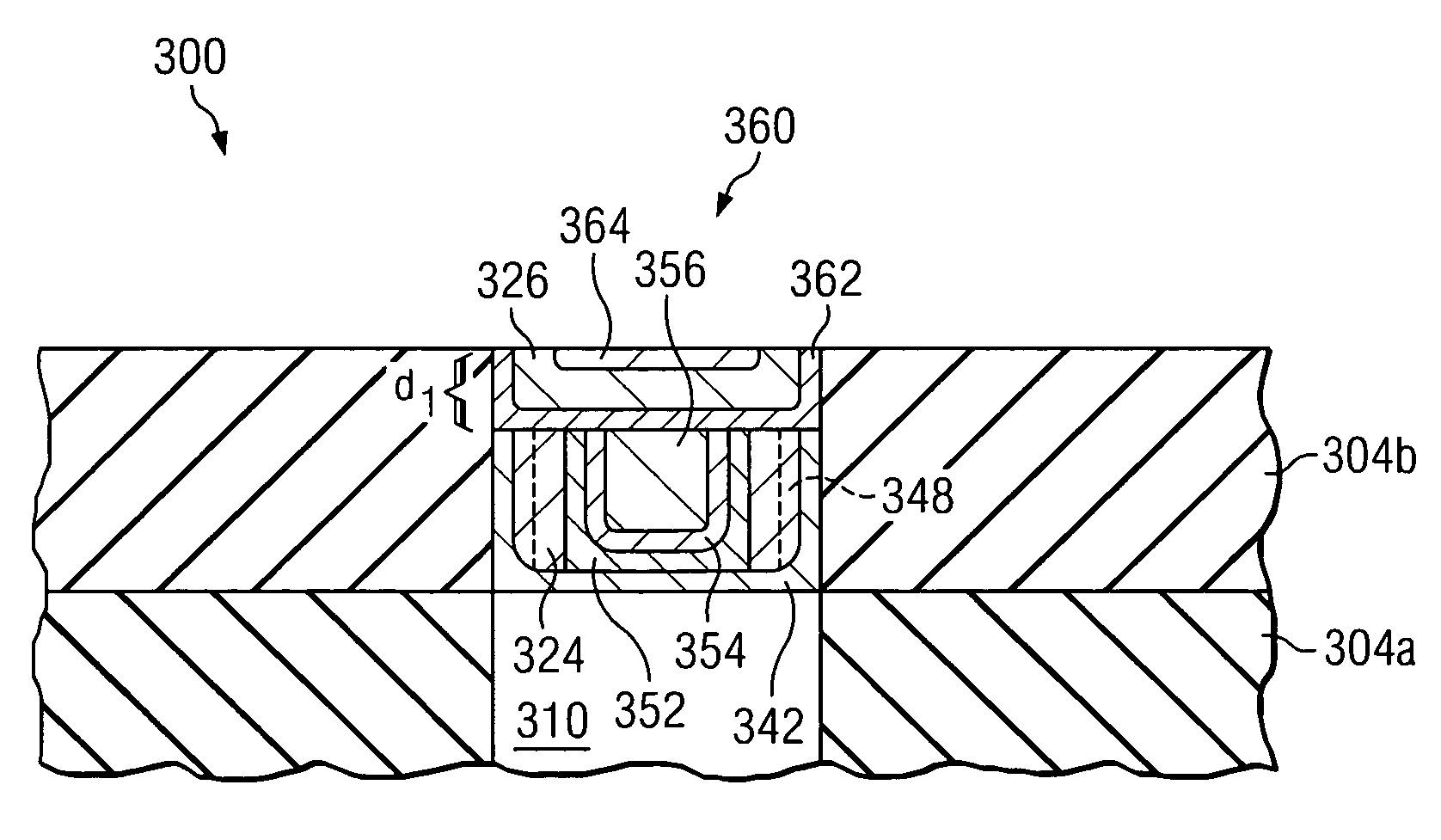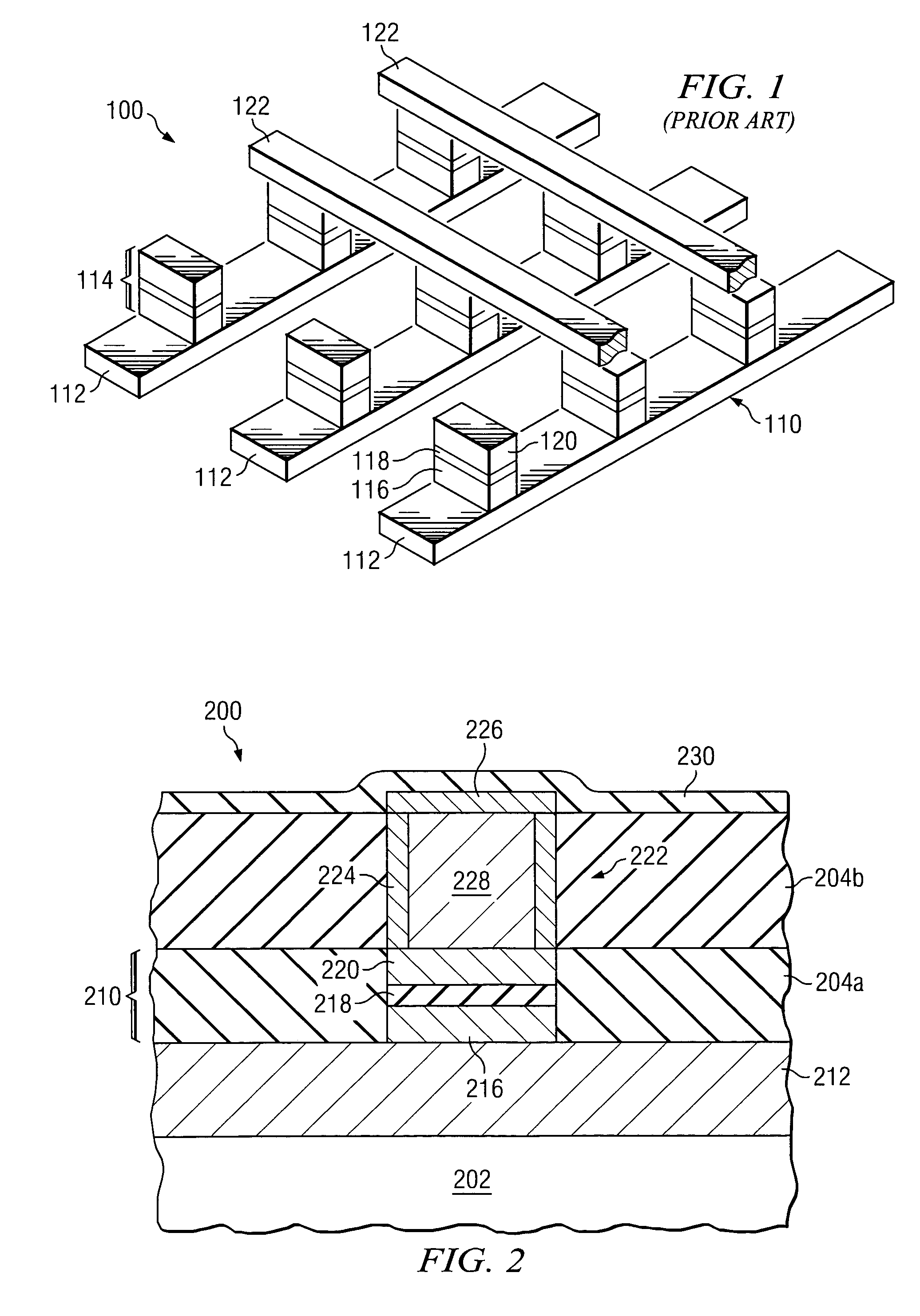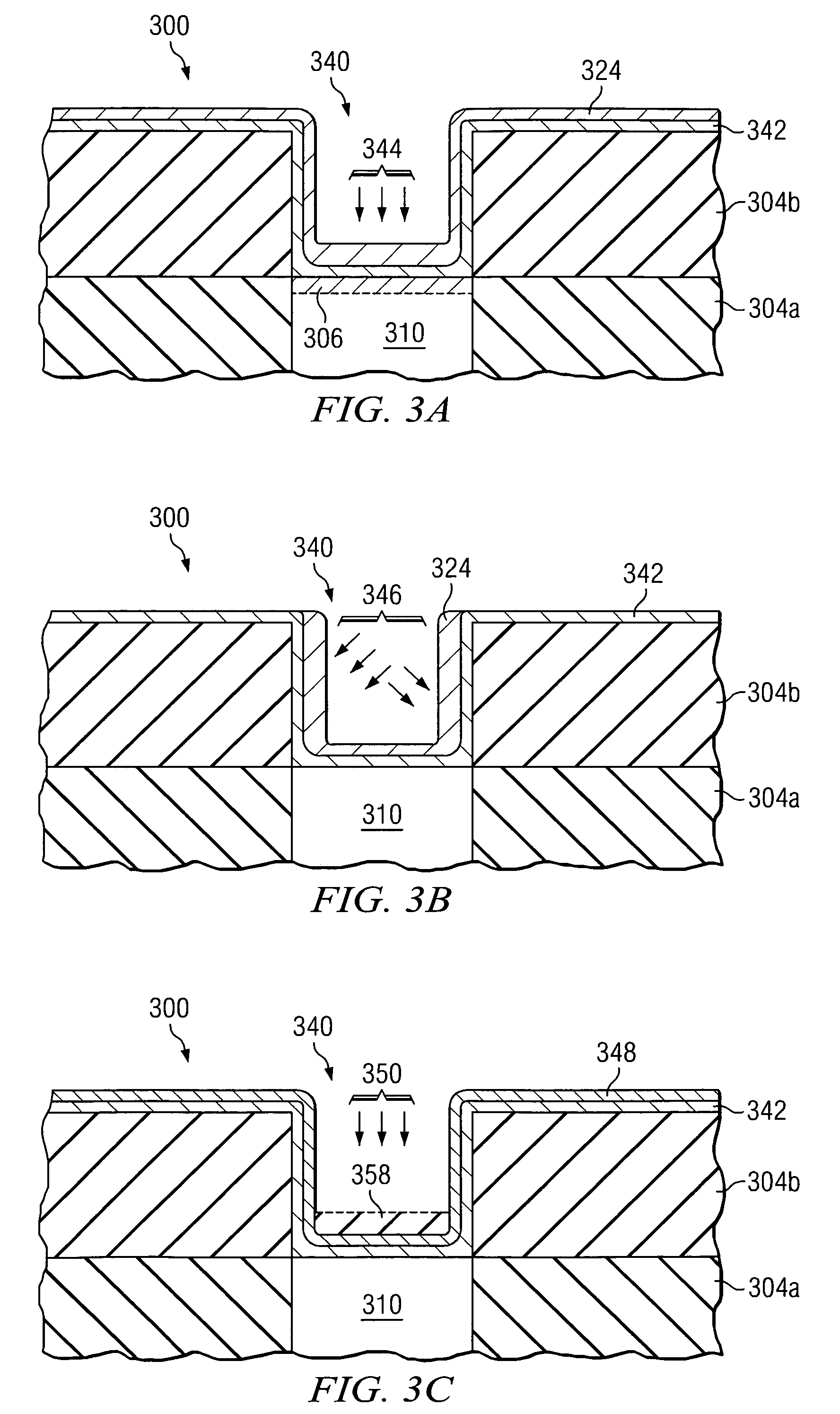Ferromagnetic liner for conductive lines of magnetic memory cells and methods of manufacturing thereof
a technology of magnetic memory cells and conductive lines, which is applied in the direction of digital storage, semiconductor devices, instruments, etc., to achieve the effect of reducing the current and power consumption of an mram device, and increasing the flux concentration of conductive lines
- Summary
- Abstract
- Description
- Claims
- Application Information
AI Technical Summary
Benefits of technology
Problems solved by technology
Method used
Image
Examples
Embodiment Construction
[0019]The making and using of the presently preferred embodiments are discussed in detail below. It should be appreciated, however, that the present invention provides many applicable inventive concepts that can be embodied in a wide variety of specific contexts. The specific embodiments discussed are merely illustrative of specific ways to make and use the invention, and do not limit the scope of the invention.
[0020]The present invention will be described with respect to preferred embodiments in a specific context, namely an MRAM device. Embodiments of the present invention may also be applied, however, to other magnetic devices, namely, magnetic memory devices, for example.
[0021]FIG. 1 illustrates a perspective view of a prior art crosspoint MRAM 100 device having bitlines 112 located substantially perpendicular to wordlines 122 in adjacent metallization layers. Magnetic stacks 114 are positioned between the bitlines 112 and wordlines 122 adjacent and electrically coupled to bitli...
PUM
 Login to View More
Login to View More Abstract
Description
Claims
Application Information
 Login to View More
Login to View More - R&D
- Intellectual Property
- Life Sciences
- Materials
- Tech Scout
- Unparalleled Data Quality
- Higher Quality Content
- 60% Fewer Hallucinations
Browse by: Latest US Patents, China's latest patents, Technical Efficacy Thesaurus, Application Domain, Technology Topic, Popular Technical Reports.
© 2025 PatSnap. All rights reserved.Legal|Privacy policy|Modern Slavery Act Transparency Statement|Sitemap|About US| Contact US: help@patsnap.com



